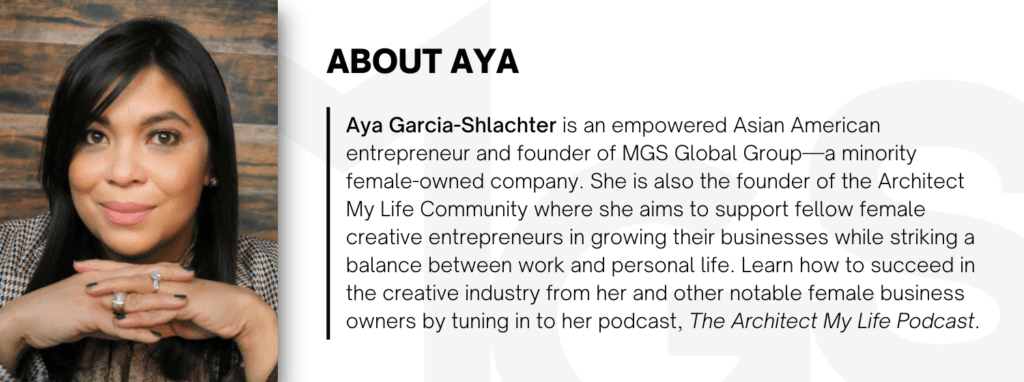4 Practical Techniques to Maintain Your Creative Edge
- 3 min read
- June 3, 2022
We all hit creative “dry spells” as designers. Coming up with new designs can be especially challenging for me because I also manage a business. This is why I deliberately set aside time to think of new ideas and draw. It was not easy at first, but with intentionality, you’ll jumpstart your creative process in no time.
Here are four practical techniques to maintain your creative edge:
1. Form Good Habits
I know I am a talented designer in my field, but it means nothing if I can’t don’t follow through with necessary action when needed. Discipline and consistency have always been key ingredients for my success. After all, “Hard work beats talent when talent doesn’t work hard.”
Admittedly, good habits are not formed overnight. I have gradually developed mine through practice and repetition, which freed me from relying on my willpower to act and has automated my creative process.
Habit formation is a behavioral change you can accomplish by:
- Choosing specific and reasonable goals to initiate the transformation.
- Position yourself in the right environment for success.
- Telling others about your intentions to keep you accountable.
I like to set a time and place to perform my creative work because it removes distractions which may impede my progress. It could mean refraining from going on social media or even shutting down my phone.
In spite of integrating these safeguards, I was not disheartened by the occasional slip up. I have accepted that it is only natural for that to happen, but I immediately reinforce the good habits. With time, I was able to jumpstart my creativity much quicker.
2. Find Different Sources of Inspiration
Sure, I can create as many designs as I please based on my preferred style and existing knowledge. But without new inspiration, my output runs the risk of becoming repetitive. Worse, my finished designs might appear dated as soon as I complete them if I’m not exposing myself to new concepts.
There are a variety of ways I use to replenish my creative reserves.
The Internet for one, is full of design trends. I can instantly tap into whatever my peers are currently producing, check market preferences or even seek out random influences. Picking up some design magazines is also helpful to find expert insight into the industry.
Another no-brainer: Visiting or participating in construction and design trade shows. These shows exhibit tangible examples and could even provide a sneak peek into upcoming trends. Go to scope out novel ideas and make new connections with suppliers or clients.
I also try to follow the careers of designer gurus and my mentors. Not only can I study their paths to success, but they could also serve as a benchmark for my ideas. Comparing my raw concepts with theirs could perhaps act as a testing mechanism before actually fleshing out my ideas into finished designs.
These areas will certainly keep me busy and hopefully, lead to viable production.
3. Detach and Unwind
The construction and design business is rewarding, but it also can be quite hectic. It can be tempting to keep working on my craft despite the long hours and at times, stressful situations. This non-stop nature can lead to burnout and may adversely affect my creativity.
This is why I must deliberately set aside time for myself to step back and take a pause.
I find constructive ways to relax and recharge by engaging in a healthy lifestyle. For example, I incorporate nutritious meals with a consistent exercise routine into my schedule. Not only will it keep my body strong, the discipline it requires helps me form good habits. This could dovetail into creating better habits for my creative process.
Quieting the mind through meditation also has its benefits:
- Stress reduction
- Improved self – awareness
- Longer attention Span
- Better Sleep Quality
These enable me to think clearly when it is time to get back to formulating new design ideas for work.
4. Procrastination May Be a Good Thing
Yes, really.
Allow me to share some insights from bestselling author and Wharton School Management and Psychology Professor, Adam Grant, who wrote a contributing opinion article for The New York Times entitled, Why I Taught Myself to Procrastinate.
A small study conducted by one of his former students looked into the originality of work submitted by procrastinators. It revealed that the procrastinators’ ideas were 28 percent more imaginative than those who did not procrastinate.
This isolated experiment is certainly not conclusive evidence, though Grant goes on to explain how Steve Jobs, Bill Clinton, American architect Frank Lloyd Wright and screenwriter Aaron Sorkin have all reached the pinnacle of their respective fields despite their predisposition to procrastinate.
Grant even tested the theory on himself.
He discovered that divergent ideas (which can fuel creativity) had a better chance of being developed when he put off working on a certain writing task. The first ideas are often the more conventional ones and while safe, tend to lack originality.
Still, he cautions against destructive procrastination which yields the easiest or even substandard ideas when pressed for time. To avoid this, he recommends visualizing the fear of failure. The quiet panic it generated often jolted me into action. I also set attainable progress markers instead of trying to get things perfect immediately. This always makes a task more manageable and less daunting.
In My Experience
The techniques I mention above are what have fueled and broadened my creative repertoire. But everyone’s approach is different. Find what works for you. Every February, for example, I make a conscious effort to work only three hours a day for the entire month. This is challenging since I truly enjoy my work and participating in speaking engagements or other business-related activities that keep my to-do lists active.
May is a month to allow myself more time for reflection. By not engaging in work-related activities, I discovered that I have an easier time coming across creative ideas. New concepts in design and business strategy become clearer since there is less focus on the daily grind.
It is a form of disciplined procrastination akin to Adam Grant’s article. This can be used to generate creativity though there must still be a goal and deadline present to keep it in check.
If you have time, try reading The Power of Creativity (Book 1) by Brian Collins. This has also helped me find strategies to improve my own creative process. It quotes one of the most creative minds who ever lived:
“Our goals can only be reached through a vehicle of a plan, in which we must fervently believe, and upon which we must vigorously act. There is no other route to success.” – Pablo Picasso
Was this insightful? Give a thumbs up or post a comment.
For more of our blogs, check out https://mgsglobalgroup.com/blog/.
MGS Global Group is here to help if you require any more assistance. Get in touch with us for all your drafting needs.

Connect with us!



